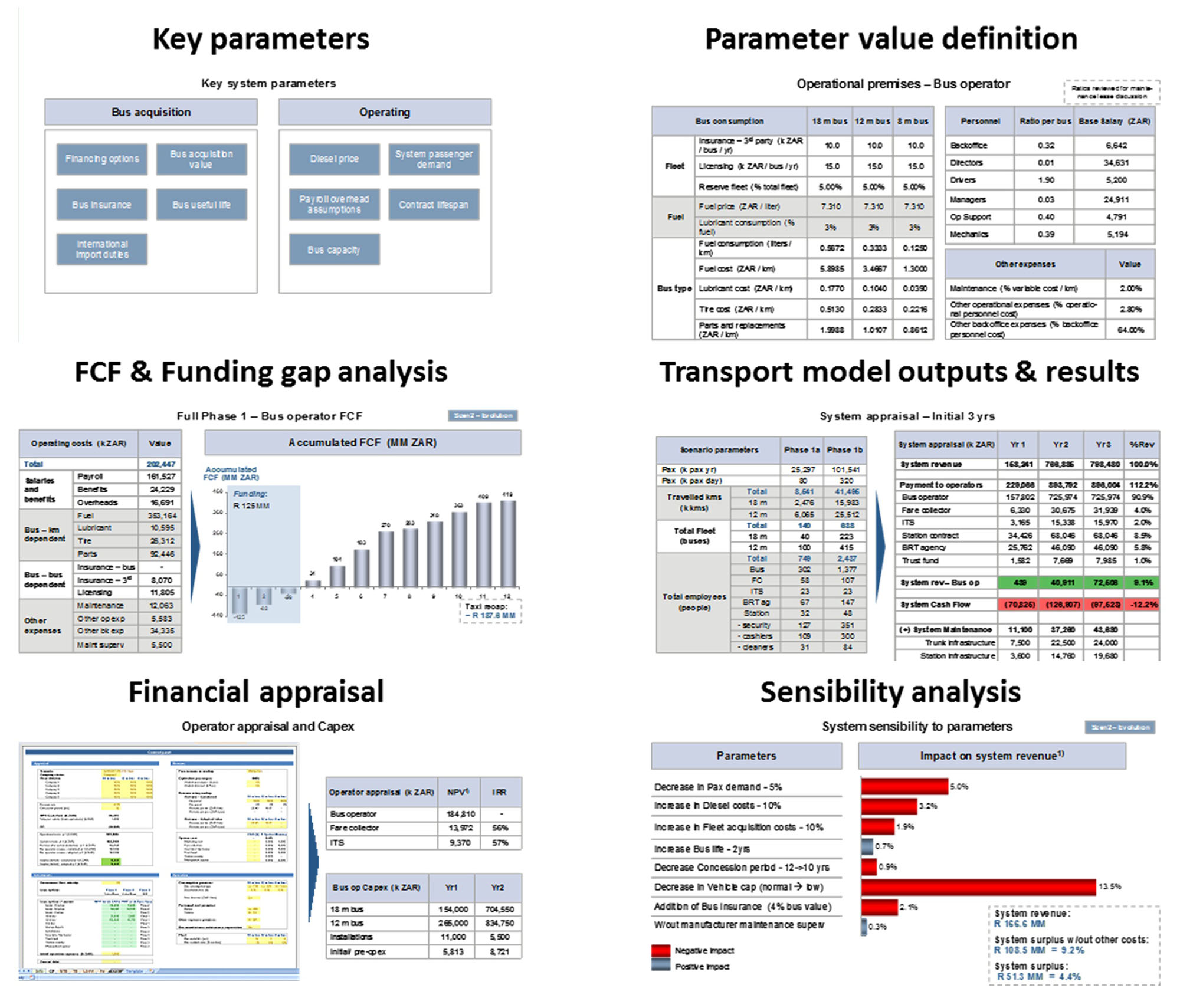14Financial Modeling
Contributor: Diogo Barreto, LOGIT - Transportation Engineers
Imagine the world of mobile based on Nokia and Motorola if Apple had not been restarted by a missionary entrepreneur named Steve Jobs who cared more for his vision than being tactical and financial.Vinod Khosla, engineer co-founder of Sun Microsystems, 1955–
The success of advanced transportation systems, such as BRT, does not depend solely on technical resources, such as coherent operational planning, technology selection, and transportation infrastructure, but also upon financial resources to ensure smooth operation for the entities involved. Through financial modelling, it is possible to identify specific issues of the project design, as well as quantify the monetary amounts involved. It is based on this information that decision makers may begin searching for financing alternatives and decide on operational scenarios.
Furthermore, financial modelling allows for the appraisal of:
- Different types of tariff structures;
- Vehicle fleet compositions;
- Cost/sizing parameters;
- Financing options/fees;
- Profit level/business value of system entities
- Free cash-flow and funding-gap;
- Uncertainties.
